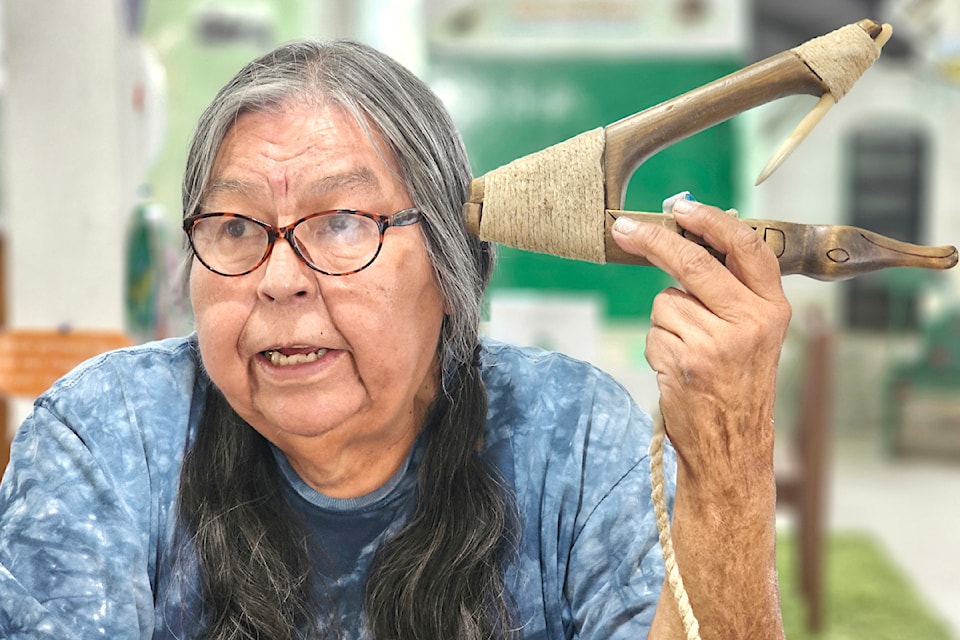Karen Gabriel held up two pieces of a carved stone maul.
"This is 2,000 to 5,000 years old," the Kwantlen First Nation elder said.
"It's a broken maul that was actually given to me. So it is old and it was broken and somebody was lucky enough to find both [pieces]. This is for pounding and hammering."
For years, Gabriel has been teaching the technology and tools used by Indigenous people in 91ԭ�� schools and other venues.
Indigenous tools: Kwantlen elder Karen Gabriel demonstrated tools past and present Sunday at Campbell Valley Regional Park at 20285 8 Ave. in the Nature House next to the red barn from 1 p.m. to 3 p.m.
— 91ԭ�� Advance Times (@91ԭ��Times)
On Saturday, Aug. 11, she was in Campbell Valley Regional Park, unpacking dozens of traditional tools for display and explanation, including a , a fish club, bone knife, jade blades and more.
People are often surprised to learn how sophisticated First Nations technology could be, she said.
"They're astonished," Gabriel told the 91ԭ�� Advance Times."
"They can't believe the natives had the knowledge and the smarts to make these kind of tools."
It was all motivated by survival, Gabriel explained.
"You had to do trial and error until you found something else that worked. Because if you didn't, you're going to starve to death. You learned knowledge from other villages, other people that would pass on and find out something that worked, and they would give [others] the knowledge. We weren't stingy with our knowledge. "
A stickler for historical accuracy, Gabriel said some of the tools were not quite the right size or made without the precisely correct type of material, because they had been made to replace her previous, stolen kit.
"My late husband made the tools [for my first kit] for me. And he did a lot of research. He went to UBC, he went to all the different museums, got a lot of book knowledge, and then he tried to make all the tools out of the right material, right size, and right everything. But this kit right here is not from my late husband. This was made after my first kit got stolen."
She has been teaching First Nations history and culture to non-Indigenous audiences for 32 years.
"I'm just glad that they're into learning about us because they were reading books and stuff that was untrue," she said.
"But now they're actually learning from us First Nations. So they're learning firsthand and they're learning the right material, they're getting the right education from us."
READ ALSO: Unique First Nations tools stolen
READ ALSO: VIDEO: A Mother’s Day with a difference in 91ԭ��



